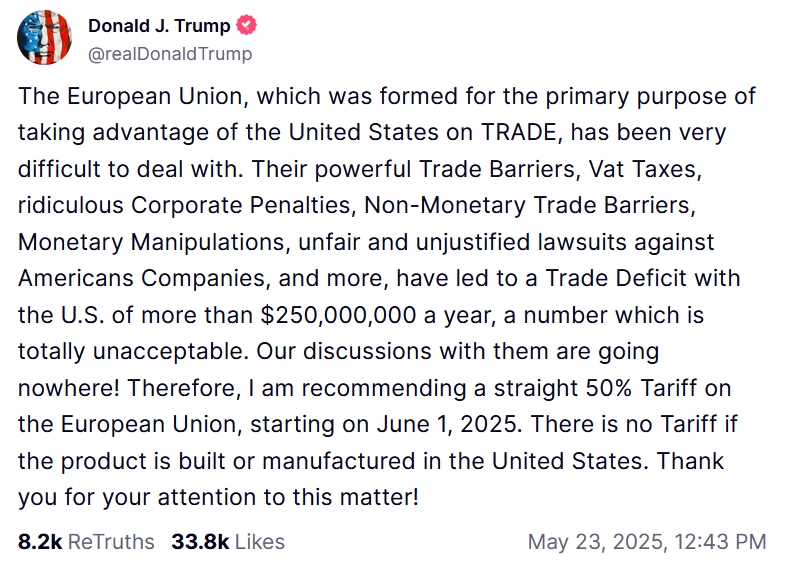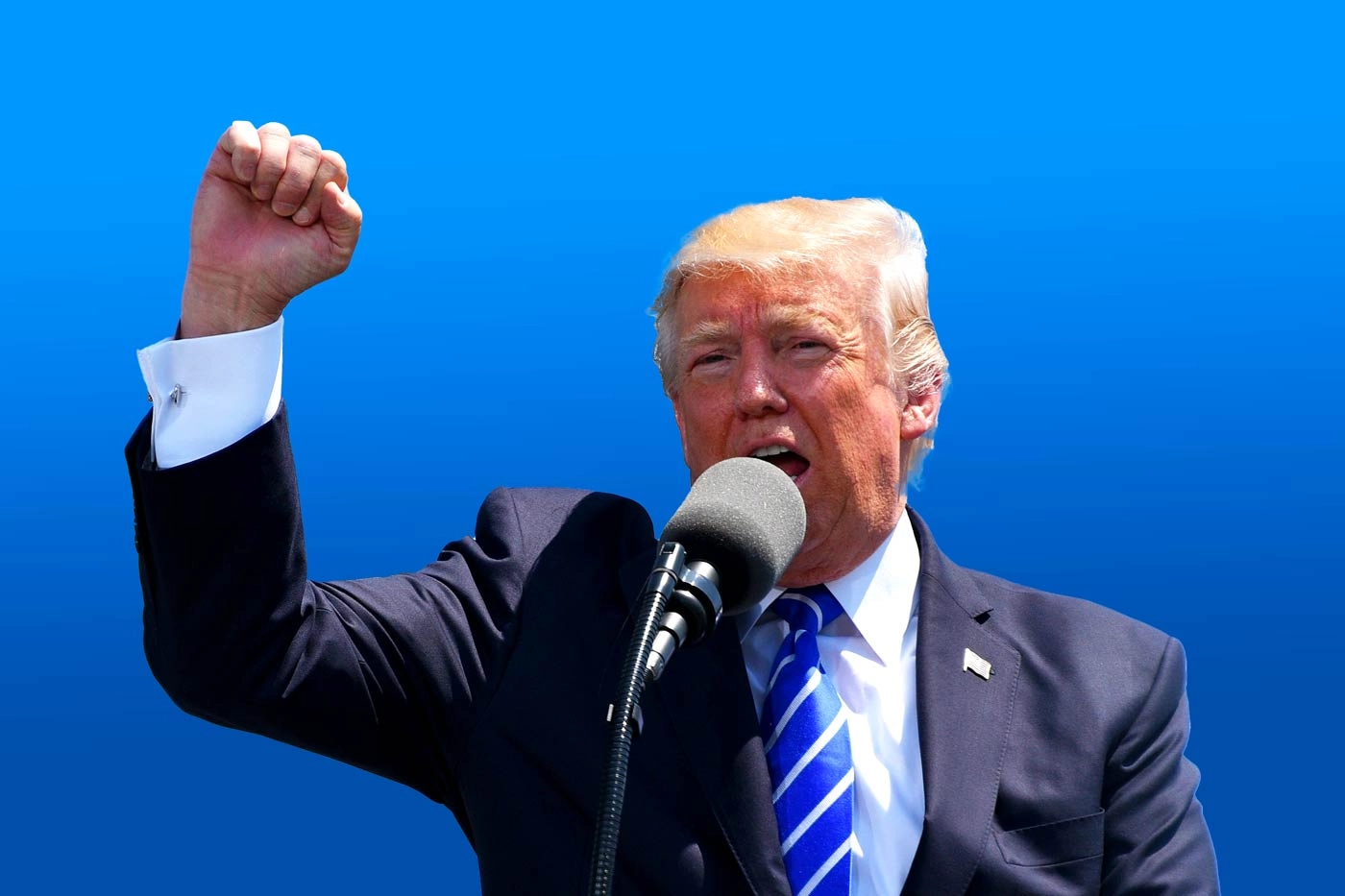U.S. President Calls Trade Talks with EU “Unproductive”
U.S. President Donald Trump announced on Friday that he recommends a 50% tariff on all European Union goods beginning June 1, citing what he described as failed trade talks and unfair treatment by the EU. He made the announcement on his social media platform, Truth Social, where he said the tariffs would not apply to products made within the United States.
Trump expressed frustration with the lack of progress in trade discussions and accused the EU of using “hidden taxes,” strict product rules, and legal actions against American companies to harm U.S. trade interests. He stated that these policies have led to an annual trade gap of over $250 billion, a figure he labeled “completely unacceptable.”

Trump is Not Saying the Whole Truth, Here`s Why
1. The Real Trade Deficit Is Smaller
According to official data from the U.S. Census Bureau and the Bureau of Economic Analysis, the U.S. trade deficit in goods and services with the EU in recent years has been closer to $200 billion, not over $250 billion. In 2023, for example, it was around $202 billion. While that is a large number, it is significantly lower than what Trump claimed.
2. He Often Refers Only to Goods
Trump frequently excludes services in his statements. The U.S. actually has a trade surplus in services with the EU (such as finance, tech, education, and tourism). When only goods are counted, the deficit is higher - but this gives an incomplete picture, because trade includes both goods and services.
3. Trade Deficits Are Not Always a Sign of Unfair Trade
A trade deficit means a country imports more than it exports, but it does not necessarily mean the trade is unfair. It can reflect consumer demand, investment flows, or a strong currency. Economists argue that blaming the deficit solely on EU trade rules or taxes oversimplifies the issue.
4. The EU’s VAT Is Not a Trade Barrier
Trump has criticized the EU’s Value Added Tax (VAT) as a kind of hidden tax on U.S. products. However, VAT is applied to all goods sold in the EU, not just imports, and EU exports also get VAT refunds. Experts say this makes VAT neutral for trade and not a form of protectionism.
Brussels Yet to Respond, Talks Already Scheduled
The European Commission has not released an official reply to Trump’s threat. The timing of Trump’s post - just hours before the scheduled discussion - raises the stakes for what had already been a tense conversation.
In earlier talks, the EU had also expressed concern over previous U.S. tariffs, including a 25% duty on steel and aluminum and a 10% general tariff announced in April. Those measures were temporarily paused for 90 days, but Trump’s new statement suggests a hard shift in tone and strategy.
Europe Prepares Own Set of Trade Measures
In response to previous U.S. actions, the EU has already imposed its own tariffs affecting $26 billion worth of American products. These include agricultural goods, industrial machinery, clothing, and other items. The EU has also drafted a second, larger package of counter-tariffs targeting around $100 billion worth of American goods. This list includes electric vehicle batteries, aircraft, olive oil, and more. These measures are still under review and would only be implemented if Trump’s tariffs go into effect and no agreement is reached.
Broader Trade Disputes Continue
Trump’s statement comes amid other ongoing trade conflicts. The U.S. recently signed a partial trade deal with the U.K. that would lower import taxes on British cars. Meanwhile, a truce with China is in place for now, following a Geneva agreement that reduced tariffs on both sides. During a recent visit to the United Arab Emirates, Trump admitted that the U.S. does not currently have enough staff to manage trade talks with every country affected by the new tariffs, saying some actions would proceed without negotiations.
How Can Trump's Tariffs Affect Madeira's Economy
The proposed 50% U.S. tariff on EU goods could impact Madeira’s tourism by increasing costs for imported products used in hotels and restaurants. Economic retaliation from the EU may reduce U.S. tourist numbers, a key market for Madeira, hurting revenues. Trade tensions might also cause currency fluctuations and economic uncertainty, affecting travel demand. While tariffs target goods, the ripple effects could disrupt supply chains, raise prices, and lower American tourist spending, challenging Madeira’s tourism industry stability and growth.








Comments